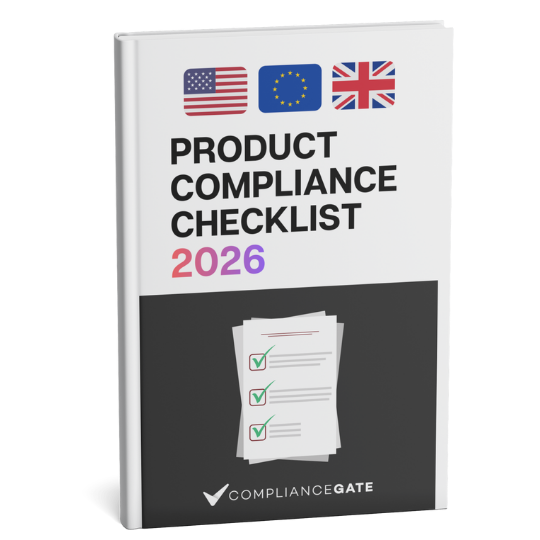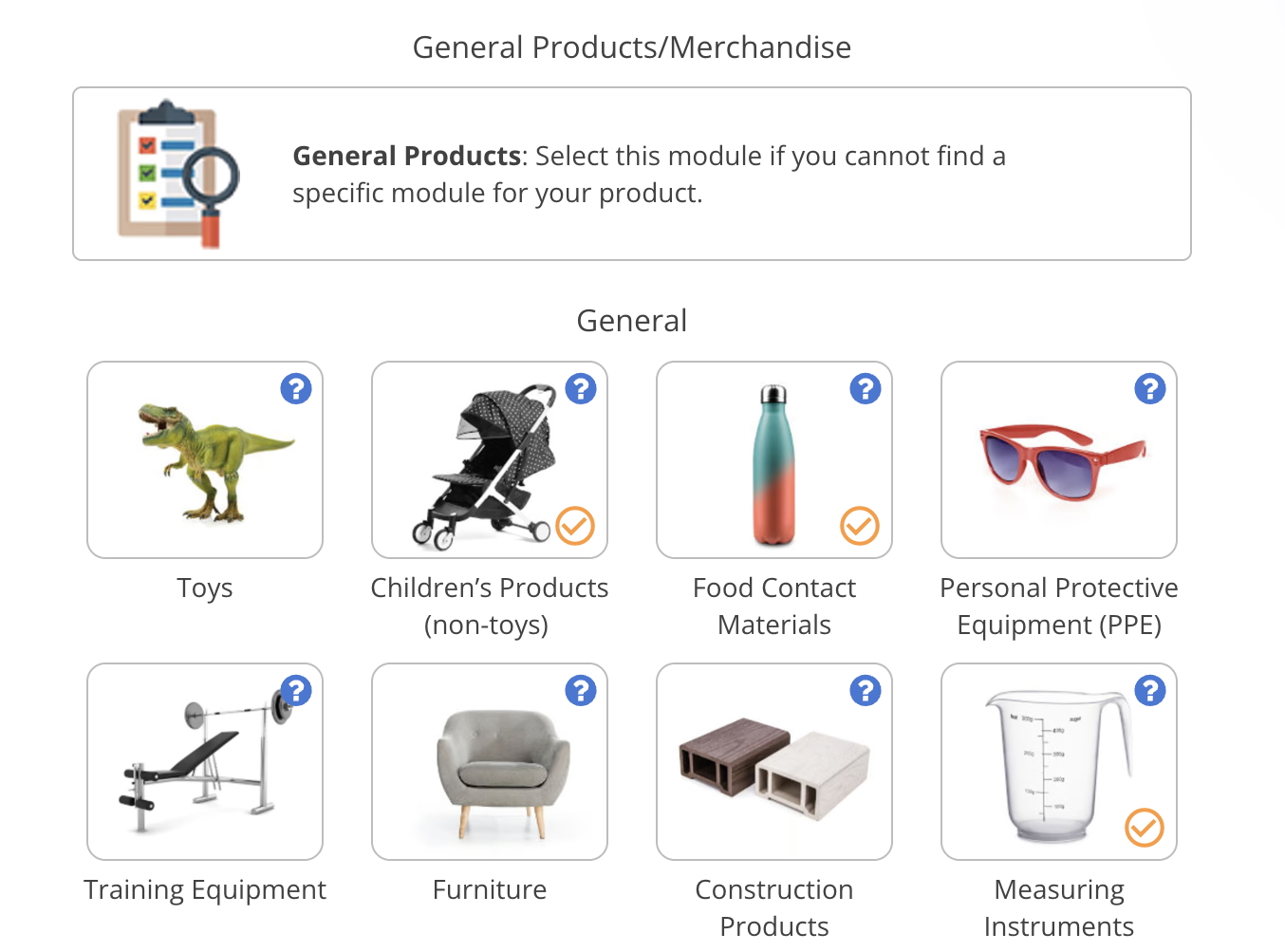Ensuring compliance with the General Product Safety Regulation (GPSR) requires that your product meets safety, labelling, and other requirements set by relevant product standards. In this guide, we explain how you can identify such standards for your product, and how the principles can be implemented in practice.
You can also find a list of all standards that, at the time of publication, listed as harmonised under the General Product Safety Regulation.
Content Overview

FREE CONSULTATION CALL (30 MIN)
 Ask questions about compliance requirements
Ask questions about compliance requirements Countries/markets:
Countries/markets:
 Learn how we can help your business
Learn how we can help your business
You will speak with:Ivan Malloci or John Vinod Khiatani
The GPSR requires that all products are safe for consumers. Many products are subject to product specific regulations and directives that already address risks. For example, chargers are subject to the Low Voltage Directive, which concerns electrical safety. The same principles applies to toys, personal protective equipment, medical devices, cosmetics, and many other products.
That said, the GPSR serves as a safety net as it sets the safety principles for all other consumer products.
Furthermore, Article 9 states that you must specify which European standards your product conforms to in the technical documentation.
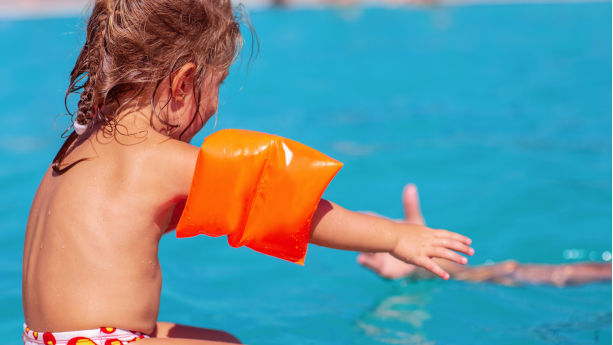
Which GPSR standards should we comply with?
Article 7 explains the concept of presumption of conformity, which essentially means that a product is considered safe under the GPSR if it compliens with relevant product standards. Article 7 provides several options for selecting suitable standards:
1. For the purpose of this Regulation, a product shall be presumed to be in conformity with the general safety requirement laid down in Article 5 of this Regulation in the following cases:
(a) it conforms to relevant European standards or parts thereof as far as the risks and risk categories covered by those standards are concerned, the references of which have been published in the Official Journal of the European Union in accordance with Article 10(7) of Regulation (EU) No 1025/2012; or
(b) in the absence of any relevant European standards as referred to in point (a) of this paragraph, the product conforms to national requirements, as regards the risks and risk categories covered by health and safety requirements laid down in the national law of the Member State in which it is made available on the market, provided that such law is in compliance with Union law.
In short, the GPSR gives you the option to implement harmonised standards, which you can find on the European Commission website, or to identify other relevant European or even national standards.
This may sound confusing, but can be explained by the fact that only around 120 standards are currently harmonised under the GPSR. This means that there are no harmonised standards for most products – in which case you need to look for alternatives. Keep in mind that not all European standards are harmonised.
Checklist
This checklist can help you understand how to determine which standards apply to your products:
1. Are there harmonised standards published in the Official Journal for my product?
2. If not, are there other European standards or national laws for my product?
3. If not, does any of the following exist for my product?
- International standards;
- International agreements;
- Voluntary certification schemes or similar third-party conformity assessment frameworks;
- Commission recommendations or guidelines on product safety assessment;
- National standards drawn up in the Member State in which the product is made available;
- The state of the art and technology, including the opinion of recognised scientific bodies and expert committees;
- Product safety codes of good practice in force in the sector concerned;
- Reasonable consumer expectations concerning safety;
What is a harmonised standard?
In the context of the GPSR, a harmonised standard refers to a standard that has been published in the Official Journal. These often apply to products where safety is of particular concern, which includes children’s products, gym equipment, climbing equipment, and so on.
What does presumption conformity mean?
In the context of the GPSR, presumption of conformity means that your product has presumed to be safe and compliant if you ensure that your product is designed and tested according to relevant standards.
For example, if you sell baby cribs, then your product is only presumed to be safe if it meets the current standards that apply to baby cribs. Here are the examples we could find:
EN 1130:2019, EN 1130:2019/AC:2020 – Children’s furniture – Cribs – Safety requirements and test methods
EN 1130-1:1996 – Furniture – Cribs and cradles for domestic use – Part 1: Safety requirements
EN 1130-2:1996 – Furniture – Cribs and cradles for domestic use – Part 2: Test methods
In short, you are required to demonstrate that you have done what you can to ensure that your product is safe, and in most cases that means that you must comply with one or more existing European standard.
Are we exempt if no standards exist for our product?
If no standards exist you need to come up with your own methods to define and verify product safety. The fundamental principle, that all products must be safe, does not hinge on the existence of product standards.
How can I find GPSR related standards?
You can find a list of standards harmonised under the GPSR on the European Commission website. You can also search for harmonised and non-harmonised European standards on the CENELEC website.
Are GPSR standards accessible for free?
Unlike the GPSR legislation text, harmonised and other European standards are normally not public information. This means that you must buy the relevant standards to get access to their information.
What should we do with a standard?
A standard is essentially a PDF file that contains information about the criteria that must be met in order to reach the applicable safety requirements. Standards define highly product specific safety criteria.
Here are a few examples:
1. Mechanical safety – Maximum load requirements for baby cribs or climbing gear
2. Construction – maximum width between baby cot bars
3. Labels and symbols (examples)
4. Flammability
As such, product standards have a direct impact on how you must design the product, and which materials you should use. Hence, identifying standards is essential at an early stage of product development, as the design, construction, and materials are affected.
How do we verify that our product is compliant with a standard?
You must first ensure that you have done everything you can do implement the safety principles of the relevant standards into the products design. Beyond that, lab testing required to verify that the finished product is compliant.
Do we need to comply with GPSR standards if our product is already covered by other regulations or directives?
This can happen, if there are risks or safety aspects not covered by those regulations or standards. For example, if you sell a baby cot with some kind of built in play feature – then you’d need to comply with standards harmonised both under the General Product Safety Regulations and the Toy Safety Directive.
What can happen if our product is not compliant with GPSR standards?
If you do not comply with relevant standards, then your product is not presumed to confirm to the requirements under the GPSR. This in turn means that your product does not meet the requirements set by the GPSR, and can therefore not be sold in the European Union.
Where can I find a list of harmonised standards under the GPSR?
Here is a list from the European Comission website that lists harmonised standards:
| Standard | Title |
| EN 581-1:2006 | Outdoor furniture – Seating and tables for camping, domestic and contract use – Part 1: General safety requirements |
| EN 716-1:2017+AC:2019 | Furniture – Children’s cots and folding cots for domestic use – Part 1: Safety requirements |
| EN 913:1996 | Gymnastic equipment – General safety requirements and test methods |
| EN 913:2008 | Gymnastic equipment – General safety requirements and test methods |
| EN 913:2018 | Gymnastic equipment – General safety requirements and test methods |
| EN 914:2008 | Gymnastic equipment – Parallel bars and combination asymmetric/parallel bars – Requirements and test methods including safety |
| EN 914:2020 | Gymnastic equipment – Parallel bars and combination asymmetric/parallel bars – Requirements and test methods including safety |
| EN 915:2008 | Gymnastic equipment – Asymmetric bars – Requirements and test methods including safety |
| EN 916:2003 | Gymnastic equipment – Vaulting boxes – Requirements and test methods including safety |
| EN 957-1:2005 | Stationary training equipment – Part 1: General safety requirements and test methods |
| EN 957-2:2003 | Stationary training equipment – Part 2: Strength training equipment, additional specific safety requirements and test methods |
| EN 957-4:1996 | Stationary training equipment – Part 4: Strength training benches, additional specific safety requirements and test methods |
| EN 957-4:2006+A1:2010 | Stationary training equipment – Part 4: Strength training benches, additional specific safety requirements and test methods |
| EN 957-5:1996 | Stationary training equipment – Part 5: Pedal crank training equipment, additional specific safety requirements and test methods |
| EN 957-5:2009 | Stationary training equipment – Part 5: Stationary exercise bicycles and upper body crank training equipment, additional specific safety requirements and test methods |
| EN 957-6:2001 | Stationary training equipment – Part 6: Treadmills, additional specific safety requirements and test methods |
| EN 957-6:2010 | Stationary training equipment – Part 6: Treadmills, additional specific safety requirements and test methods |
| EN 957-6:2010+A1:2014 | Stationary training equipment – Part 6: Treadmills, additional specific safety requirements and test methods |
| EN 957-7:1998 | Stationary training equipment – Part 7: Rowing machines, additional specific safety requirements and test methods |
| EN 957-8:1998 | Stationary training equipment – Part 8: Steppers, stairclimbers and climbers – Additional specific safety requirements and test methods |
| EN 957-9:2003 | Stationary training equipment – Part 9: Elliptical trainers, additional specific safety requirements and test methods |
| EN 957-10:2005 | Stationary training equipment – Part 10: Exercise bicycles with a fixed wheel or without freewheel, additional specific safety requirements and test methods |
| EN 1129-1:1995 | Furniture – Foldaway beds – Safety requirements and testing – Part 1: Safety requirements |
| EN 1129-2:1995 | Furniture – Foldaway beds – Safety requirements and testing – Part 2: Test methods |
| EN 1130:2019,
EN 1130:2019/AC:2020 |
Children’s furniture – Cribs – Safety requirements and test methods |
| EN 1130-1:1996 | Furniture – Cribs and cradles for domestic use – Part 1: Safety requirements |
| EN 1130-2:1996 | Furniture – Cribs and cradles for domestic use – Part 2: Test methods |
| EN 1272:2017 | Child care articles – Table mounted chairs – Safety requirements and test methods |
| EN 1273:2005 | Child use and care articles – Baby walking frames – Safety requirements and test methods |
| EN 1400:2013+A2:2018 | Child use and care articles – Soothers for babies and young children – Safety requirements and test methods |
| EN 1400-1:2002 | Child use and care articles – Soothers for babies and young children – Part 1: General safety requirements and product information |
| EN 1400-2:2002 | Child use and care articles – Soothers for babies and young children – Part 2 : Mechanical requirements and tests |
| EN 1400-3:2002 | Child use and care articles – Soothers for babies and young children – Part 3 : Chemical requirements and tests |
| EN 1466:2004 | Child care articles – Carry cots and stands – Safety requirements and test methods |
| EN 1466:2014 | Child use and care articles – Carry cots and stands – Safety requirements and test methods |
| EN 1466:2014,
EN 1466:2014/AC:2015 |
Child use and care articles – Carry cots and stands – Safety requirements and test methods |
| EN 1651:1999 | Paragliding equipment – Harnesses – Safety requirements and strength tests |
| EN 1860-1:2003 | Appliances, solid fuels and firelighters for barbecueing – Part 1: Barbecues burning solid fuels – Requirements and test methods |
| EN 1860-1:2003,
EN 1860-1:2003/A1:2006 |
Appliances, solid fuels and firelighters for barbecueing – Part 1: Barbecues burning solid fuels – Requirements and test methods |
| EN 1930:2011 | Child use and care articles – Safety barriers – Safety requirements and test methods |
| EN ISO 4210-1:2014 | Cycles – Safety requirements for bicycles – Part 1: Terms and definitions (ISO 4210-1:2014) |
| EN ISO 4210-2:2014 | Cycles – Safety requirements for bicycles – Part 2: Requirements for city and trekking, young adult, mountain and racing bicycles (ISO 4210-2:2014) |
| EN ISO 4210-2:2015 | Cycles – Safety requirements for bicycles – Part 2: Requirements for city and trekking, young adult, mountain and racing bicycles (ISO 4210-2:2015) |
| EN ISO 4210-3:2014 | Cycles – Safety requirements for bicycles – Part 3: Common test methods (ISO 4210-3:2014) |
| EN ISO 4210-4:2014 | Cycles – Safety requirements for bicycles – Part 4: Braking test methods (ISO 4210-4:2014) |
| EN ISO 4210-5:2014 | Cycles – Safety requirements for bicycles – Part 5: Steering test methods (ISO 4210-5:2014, Corrected version 2015-02-01) |
| EN ISO 4210-6:2014 | Cycles – Safety requirements for bicycles – Part 6: Frame and fork test methods (ISO 4210-6:2014) |
| EN ISO 4210-6:2015 | Cycles – Safety requirements for bicycles – Part 6: Frame and fork test methods (ISO 4210-6:2015) |
| EN ISO 4210-7:2014 | Cycles – Safety requirements for bicycles – Part 7: Wheels and rims test methods (ISO 4210-7:2014) |
| EN ISO 4210-8:2014 | Cycles – Safety requirements for bicycles – Part 8: Pedal and drive system test methods (ISO 4210-8:2014) |
| EN ISO 4210-9:2014 | Cycles – Safety requirements for bicycles – Part 9: Saddles and seat-post test methods (ISO 4210-9:2014) |
| EN ISO 8098:2014 | Cycles – Safety requirements for bicycles for young children (ISO 8098:2014) |
| EN ISO 9994:2006 | Lighters – Safety specification (ISO 9994:2005) |
| EN ISO 9994:2019 | Lighters – Safety specification (ISO 9994:2018) |
| EN ISO 11243:2016 | Cycles – Luggage carriers for bicycles – Requirements and test methods (ISO 11243:2016) |
| EN 12196:2003 | Gymnastic equipment – Horses and bucks – Functional and safety requirements, test methods |
| EN 12197:1997 | Gymnastic equipment – Horizontal bars – Safety requirements and test methods |
| EN 12221-1:2008+A1:2013 | Child use and care articles – Changing units for domestic use – Part 1: Safety requirements |
| EN 12221-2:2008+A1:2013 | Child use and care articles – Changing units for domestic use – Part 2: Test methods |
| EN 12346:1998 | Gymnastic equipment – Wall bars, lattice ladders and climbing frames – Safety requirements and test methods |
| EN 12432:1998 | Gymnastic equipment – Balancing beams – Functional and safety requirements, test methods |
| EN 12491:2001 | Paragliding equipment – Emergency parachutes – Safety requirements and test methods |
| EN 12586:1999,
EN 12586:1999/AC:2002 |
Child care articles – Soother holder – Safety requirements and test methods |
| EN 12655:1998 | Gymnastic equipment – Hanging rings – Functional and safety requirements, test methods |
| EN ISO 12863:2010 | Standard test method for assessing the ignition propensity of cigarettes (ISO 12863:2010) |
| EN ISO 12863:2010,
EN ISO 12863:2010/A1:2016 |
Standard test method for assessing the ignition propensity of cigarettes (ISO 12863:2010) |
| EN ISO 12863:2010,
EN ISO 12863:2010/A1:2016, EN ISO 12863:2010/AC:2011 |
Standard test method for assessing the ignition propensity of cigarettes (ISO 12863:2010) |
| EN 13120:2009+A1:2014 | Internal blinds – Performance requirements including safety |
| EN 13138-2:2002 | Buoyant aids for swimming instruction – Part 2: Safety requirements and test methods for buoyant aids to be held |
| EN 13209-1:2004 | Child use and care articles – Baby carriers – Safety requirements and test methods – Part 1: Framed back carriers |
| EN 13209-2:2005 | Child use and care articles – Baby carriers – Safety requirements and test methods – Part 2: Soft carrier |
| EN 13209-2:2015 | Child use and care articles – Baby carriers – Safety requirements and test methods – Part 2: Soft carrier |
| EN 13219:2008 | Gymnastic equipment – Trampolines – Functional and safety requirements, test methods |
| EN 13319:2000 | Diving accessories – Depth gauges and combined depth and time measuring devices – Functional and safety requirements, test methods |
| EN 13869:2016 | Lighters – Child safety requirements for lighters – Safety requirements and test methods |
| EN 13899:2003 | Roller sports equipment – Roller skates – Safety requirements and test methods |
| EN 14059:2002 | Decorative oil lamps – Safety requirements and test methods |
| EN 14344:2004 | Child use and care articles – Child seats for cycles – Safety requirements and test methods |
| EN 14350-1:2004 | Child use and care articles – Drinking equipment – Part 1: General and mechanical requirements and tests |
| EN 14682:2007 | Safety of children’s clothing – Cords and drawstrings on children’s clothing – Specifications |
| EN 14682:2014 | Safety of children’s clothing – Cords and drawstrings on children’s clothing – Specifications |
| EN 14764:2005 | City and trekking bicycles – Safety requirements and test methods |
| EN 14766:2005 | Mountain-bicycles – Safety requirements and test methods |
| EN 14781:2005 | Racing bicycles – Safety requirements and test methods |
| EN 14872:2006 | Bicycles – Accessories for bicycles – Luggage carriers |
| EN 14988:2017+A1:2020 | Children’s high chairs – Requirements and test methods |
| EN 15649-1:2009+A1:2012 | Floating leisure articles for use on and in the water – Part 1: Classification, materials, general requirements and test methods |
| EN 15649-1:2009+A2:2013 | Floating leisure articles for use on and in the water – Part 1: Classification, materials, general requirements and test methods |
| EN 15649-2:2009+A1:2012 | Floating leisure articles for use on and in the water – Part 2: Consumer information |
| EN 15649-2:2009+A2:2013 | Floating leisure articles for use on and in the water – Part 2: Consumer information |
| EN 15649-3:2009+A1:2012 | Floating leisure articles for use on and in the water – Part 3: Additional specific safety requirements and test methods for Class A devices |
| EN 15649-4:2010+A1:2012 | Floating leisure articles for use on and in the water – Part 4: Additional specific safety requirements and test methods for Class B devices |
| EN 15649-5:2009 | Floating leisure articles for use on and in the water – Part 5: Additional specific safety requirements and test methods for Class C devices |
| EN 15649-6:2009 | Floating leisure articles for use on and in the water – Part 6: Additional specific safety requirements and test methods for Class D devices |
| EN 15649-6:2009+A1:2013 | Floating leisure articles for use on and in the water – Part 6: Additional specific safety requirements and test methods for Class D devices |
| EN 15649-7:2009 | Floating leisure articles for use on and in the water – Part 7: Additional specific safety requirements and test methods for class E devices |
| EN 16120:2012+A2:2016 | Child use and care articles – Chair mounted seat |
| EN 16156:2010 | Cigarettes – Assessment of the ignition propensity – Safety requirement |
| EN 16281:2013 | Child protective products – Consumer fitted child resistant locking devices for windows and balcony doors – Safety requirements and test methods |
| EN 16433:2014 | Internal blinds – Protection from strangulation hazards – Test methods |
| EN 16434:2014 | Internal blinds – Protection from strangulation hazards – Requirements and test methods for safety devices |
| EN 16890:2017 | Children’s furniture – Mattresses for cots and cribs – Safety requirements and test methods |
| EN 17022:2018 | Child care articles – Bathing aids – Safety requirements and test methods |
| EN 17072:2018 | Child care articles – Bath tubs, stands and non-standalone bathing aids – Safety requirements and test methods |
| EN ISO 20957-1:2013 | Stationary training equipment – Part 1: General safety requirements and test methods (ISO 20957-1:2013) |
| EN ISO 20957-4:2016 | Stationary training equipment – Part 4: Strength training benches, additional specific safety requirements and test methods (ISO 20957-4:2016) |
| EN ISO 20957-5:2016 | Stationary training equipment – Part 5: Stationary exercise bicycles and upper body crank training equipment, additional specific safety requirements and test methods (ISO 20957-5:2016) |
| EN ISO 20957-8:2017 | Stationary training equipment – Part 8: Steppers, stairclimbers and climbers – Additional specific safety requirements and test methods (ISO 20957-8:2017) |
| EN ISO 20957-9:2016 | Stationary training equipment – Part 9: Elliptical trainers, additional specific safety requirements and test methods (ISO 20957-9:2016) |
| EN ISO 20957-9:2016,
EN ISO 20957-9:2016/A1:2019 |
Stationary training equipment – Part 9: Elliptical trainers, additional specific safety requirements and test methods (ISO 20957-9:2016) |
| EN ISO 20957-10:2017 | Stationary training equipment – Part 10: Exercise bicycles with a fixed wheel or without freewheel – Additional specific safety requirements and test methods (ISO 20957-10:2017) |
| EN ISO 25649-1:2017 | Floating leisure articles for use on and in the water – Part 1: Classification, materials, general requirements and test methods (ISO 25649-1:2017) |
| EN ISO 25649-2:2017 | Floating leisure articles for use on and in the water – Part 2: Consumer information (ISO 25649-2:2017) |
| EN ISO 25649-3:2017 | Floating leisure articles for use on and in the water – Part 3: Additional specific safety requirements and test methods for Class A devices (ISO 25649-3:2017) |
| EN ISO 25649-4:2017 | Floating leisure articles for use on and in the water – Part 4: Additional specific safety requirements and test methods for Class B devices (ISO 25649-4:2017) |
| EN ISO 25649-5:2017 | Floating leisure articles for use on and in the water – Part 5: Additional specific safety requirements and test methods for Class C devices (ISO 25649-5:2017) |
| EN ISO 25649-6:2017 | Floating leisure articles for use on and in the water – Part 6: Additional specific safety requirements and test methods for Class D devices (ISO 25649-6:2017) |
| EN ISO 25649-7:2017 | Floating leisure articles for use on and in the water – Part 7: Additional specific safety requirements and test methods for class E devices (ISO 25649-7:2017) |
| EN 957-4:2006 | Stationary training equipment – Part 4: Strength training benches, additional specific safety requirements and test methods |
| EN 60065:2002,
EN 60065:2002/A12:2011 |
Audio, video and similar electronic apparatus – Safety requirements |
| EN 60950-1:2006,
EN 60950-1:2006/A12:2011 |
Information technology equipment – Safety – Part 1: General requirements |
| EN IEC 62368-1:2020,
EN IEC 62368-1:2020/A11:2020 |
Audio/video, information and communication technology equipment – Part 1: Safety requirements |
Keep in mind that the list of standards may have been updated since the date of publication on this website.







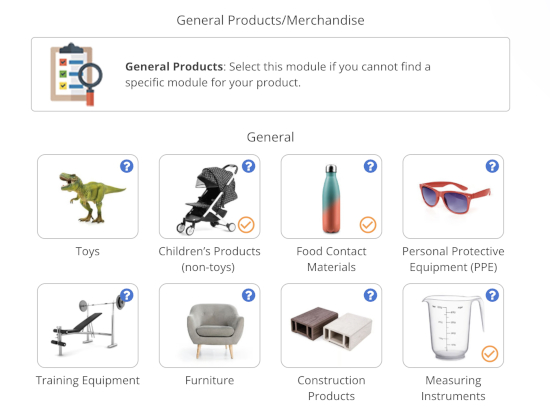






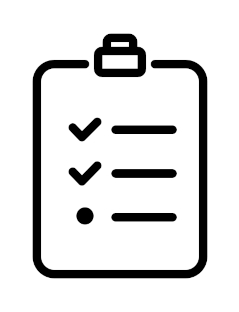

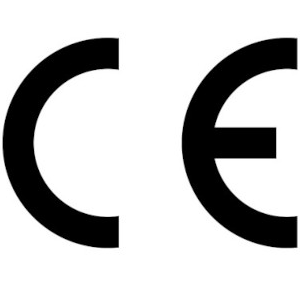




.png)
.png)
.png)
